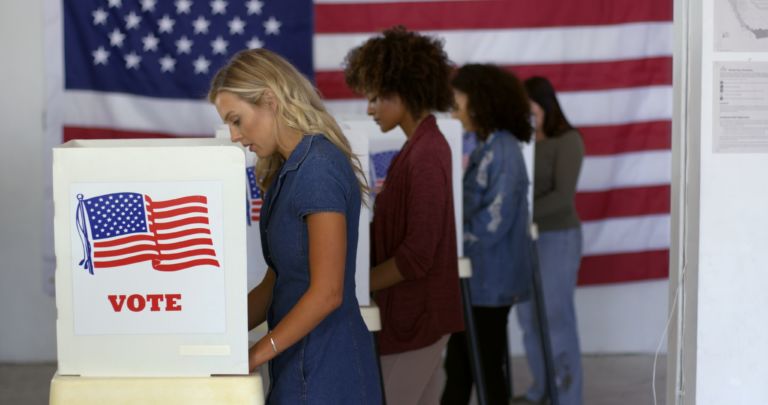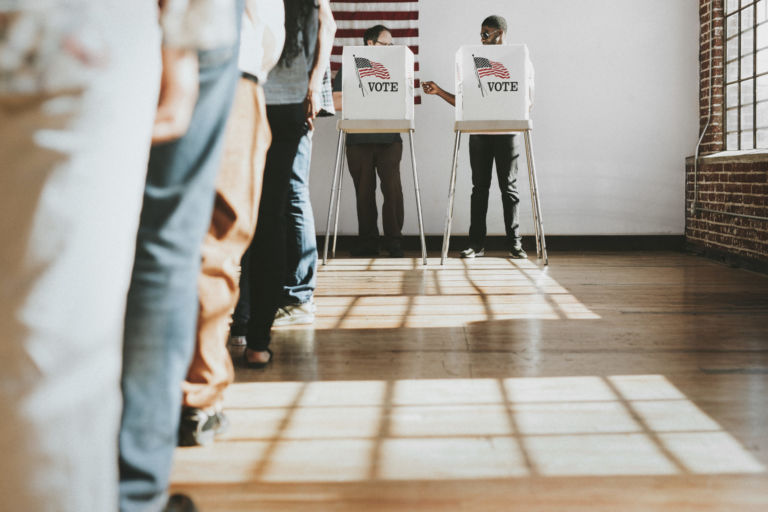North Carolina is experiencing rapid political shifts, which means that the state is politically different from what it was just four years ago.
Rapid Registration Shifts Statewide
As seen at the John Locke Foundation’s Voter Registration Changes page, those changes can be summarized as:
- Democrat registrations have declined a lot (a net loss of 219,230 registrations from November 3, 2020, to June 23, 2024),
- Republican registrations have increased slightly (a net gain of 28,397 registrations), and
- Unaffiliated registrations have increased a lot (a net gain of 361,098 registrations).
As seen in the graph below, those changes are part of a pattern going back decades (with a brief comeback for Democrats during Barack Obama’s first run for president). The pattern since 2008 of decades can be seen in chart below.

Registration Changes Vary across North Carolina
The shifts in voter registrations are not evenly distributed across the state. There are several geographic patterns within the larger trends:
- Unaffiliated registrations are quickly rising across the state,
- Democrats are expanding their dominance in urban areas (particularly Wake and Mecklenburg counties),
- Republicans are rising in the so-called “countrypolitan” counties that surround urban areas (examples include Johnston County in the Triangle, Randolph County in the Triad, and Gaston County near Charlotte). They are also picking up new voters in some rural areas.
- Democrats are declining in rural and suburban counties.
Those changes are reflected in the map below, which shows changes in registration plurality since the 2020 election. Democrats have lost the top position in seven counties, mostly in the east and Triangle region, while Republicans have lost plurality in three. All but one of those changes was to unaffiliated plurality. The one exception was Montgomery County, which went from Democratic to Republican plurality.

The map does not include several counties (such as Beaufort and Cleveland) that switched from Democratic to Republican plurality in the weeks just before the 2020 election.
In addition, three counties (Madison, Perquimans, and Swain) retained an unaffiliated plurality over the past four years but saw the number of Republican registrations overtake those of Democrats.
A Larger and Longer Pattern of Democratic Party Decline
The decline of the Democratic Party in North Carolina is hardly a new phenomenon. We were virtually a one-party state until the 1970s, and Democrats still held most positions of power in state government until a little over a decade ago.
As seen in the maps below, party plurality has shifted significantly across North Carolina since 2008 (the first year of data at Locke’s Voter Registration Changes):


Comparing the voter registration plurality between 2008 and 2024 reveals a rise of unaffiliated voters, especially in the western, northeastern, and Triangle regions. It also shows how Republicans have consolidated their position in the West (there are no plurality-Democratic counties west of Charlotte now) while making inroads into the Democrat’s former stronghold in the East.
Examples of Registration Shifts from Three Counties
Here are three examples taken from the Locke Voter Registration Changes page to illustrate changing registrations within counties. Click on the name of any county to bring up its chart.
The chart for Durham County shows the continued Democratic dominance typical of urban counties.

Gaston County, in the Charlotte metro area, is typical of growing Republican strength in suburban counties. On election day in 2008, Republican and Democratic registrations were almost the same. Since then, however, Republican registrations have increased while those of Democrats have declined.

Democrats had a commanding registration lead in 2008 in rural Sampson County in southeastern North Carolina, but Democratic registrations have declined, and Republican registrations have risen since then, a trend that has picked up steam since the

While voter registration numbers are far from being the only factor influencing election results, especially with the rise of unaffiliated voters, they are correlated with election results. They indicate a decline in the fortune of Democrats and shifting patterns of support for both parties within North Carolina.


